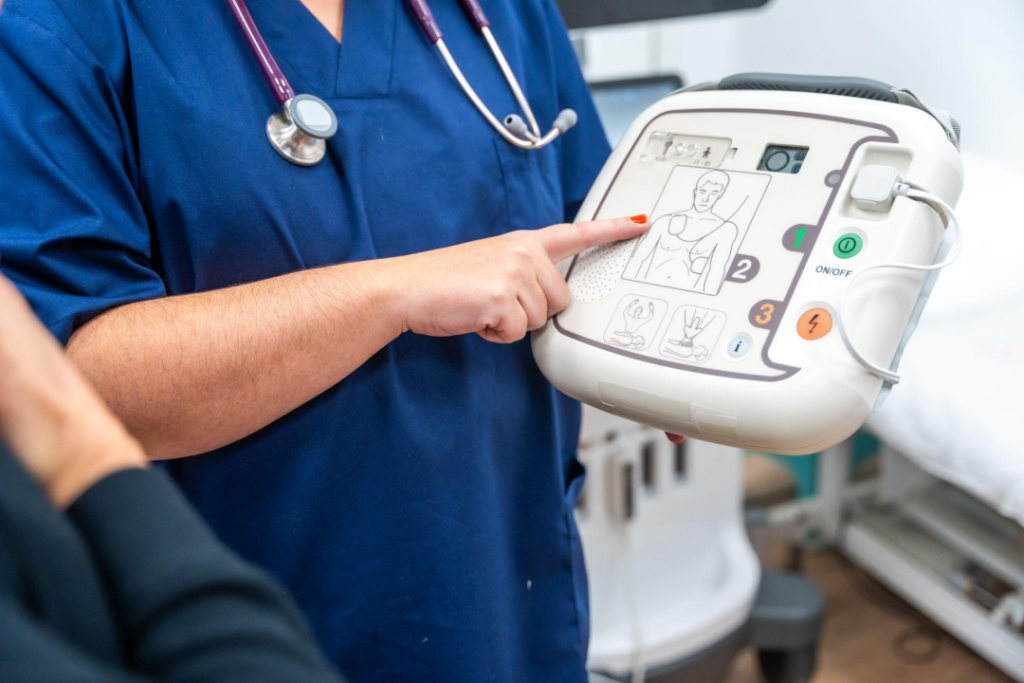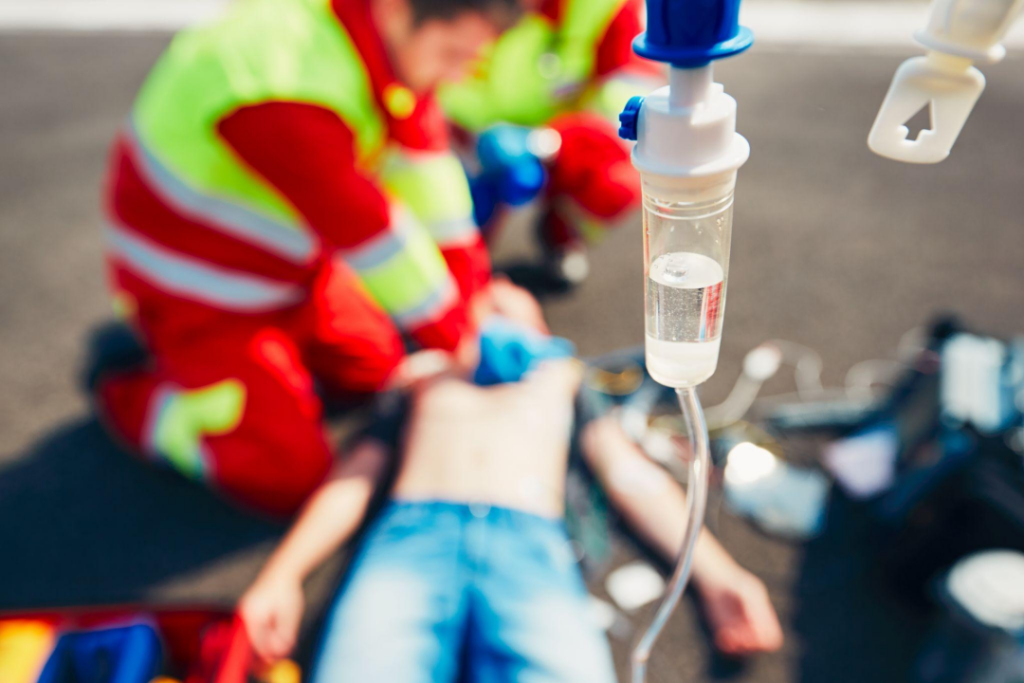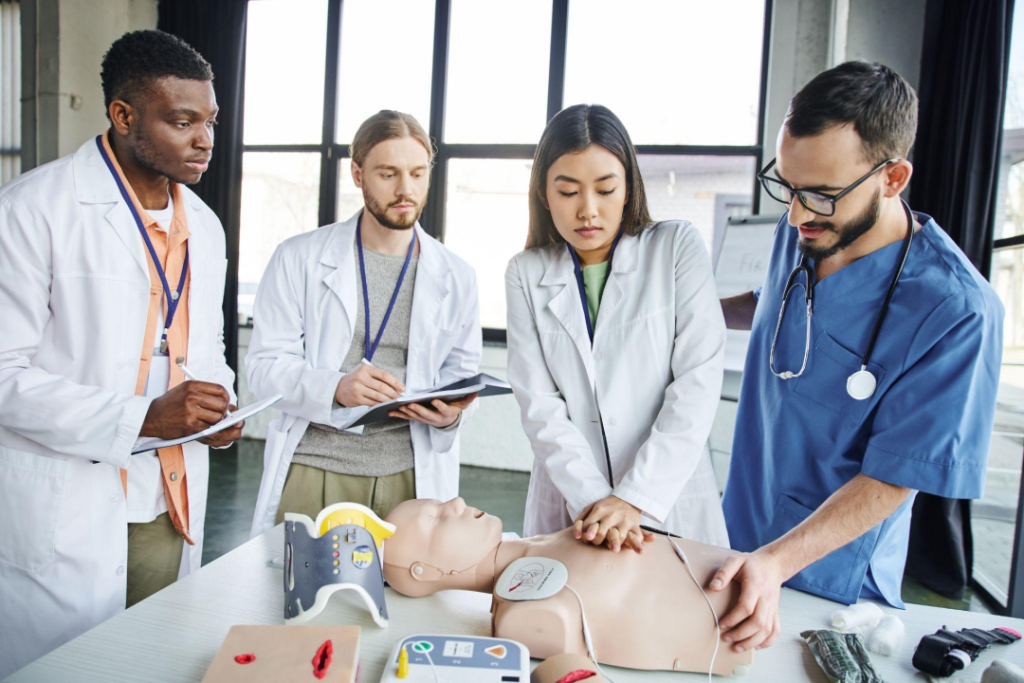Sudden Cardiac Arrest (SCA) strikes without warning – your heart stops beating, blood flow ceases, and every second counts. This life-threatening emergency differs from a heart attack, where blood flow is blocked but the heart continues beating. SCA can affect anyone, regardless of age or health status, making it a critical health concern.
Understanding the reversible causes of SCA can mean the difference between life and death. Healthcare providers use a powerful diagnostic tool called the Hs and Ts framework to identify and treat these causes quickly. This systematic approach breaks down potential triggers into two categories:
The 5 Hs:
The 5 Ts:
Each of these factors can trigger SCA, but they're also treatable when identified early. The Hs and Ts framework serves as a vital checklist during Advanced Cardiac Life Support (ACLS), guiding healthcare providers through potential causes and appropriate interventions. For instance, understanding the ACLS algorithms can greatly assist in this process.
Your understanding of these reversible causes could save a life – whether you're a healthcare professional or simply someone interested in cardiac health. If you're looking to deepen your knowledge further, consider taking some recertification courses or engaging with interactive resources like quizzes that cover essential topics such as this one on SCA or this lesson review.
Sudden Cardiac Arrest (SCA) strikes without warning, affecting people of all ages and backgrounds. Each year in the United States, 350,000+ out-of-hospital cardiac arrests occur, with devastating consequences for patients and families.
The statistics paint a sobering picture:
Cardiac arrest can stem from various heart conditions:
Many cardiac arrest victims experience warning symptoms in the hours or days before the event:
The survival rate drops 7-10% for every minute without intervention. Brain death begins within 4-6 minutes after cardiac arrest starts. Quick identification and response dramatically improve survival chances:
Understanding risk factors helps identify high-risk individuals:
Research shows that public education and widespread availability of automated external defibrillators (AEDs) significantly improve survival rates. Communities with comprehensive emergency response systems report survival rates up to 40% higher than areas without such systems.
In certain situations, such as when dealing with children experiencing sudden cardiac arrest, obtaining a PALS certification can equip individuals with necessary life-saving skills.

Advanced Cardiac Life Support (ACLS) protocols incorporate a crucial memory aid known as the "Hs and Ts" to identify reversible causes of cardiac arrest. This systematic approach helps healthcare providers deliver targeted interventions during critical moments.
Temperature classification:
In addition to understanding these reversible causes, it's vital for healthcare providers to be well-versed in the Adult Chain of Survival as outlined in ACLS protocols. This knowledge is essential for effective patient management during emergencies.
After stabilizing a patient using the Hs and Ts mnemonic, providers should follow the Post Cardiac Arrest Algorithm for optimal recovery outcomes.
For those seeking to refresh their knowledge or gain certification in ACLS and Basic Life Support (BLS), comprehensive resources are available through various online platforms such as the ACLS & BLS Recertification Bundle for Groups. These courses offer essential study materials organized into manageable sections and provide unlimited retakes at no additional charge if necessary.
Such structured learning resources can significantly enhance one's ability to respond effectively during cardiac emergencies, reinforcing the importance of continuous education in life-saving procedures.
The "T" factors in cardiac arrest present unique challenges requiring immediate recognition and specific interventions. Let's examine each condition and its impact on cardiac function:
Each "T" factor demands rapid assessment and targeted intervention during cardiac arrest resuscitation. Healthcare providers must maintain high suspicion for these conditions when managing cardiac arrest patients, as early recognition significantly improves survival chances.
In pediatric cases, the Pediatric Basic Life Support Algorithm can be crucial. This algorithm outlines the foundational pathway for pediatric BLS when two or more rescuers are present. It includes essential steps such as scene safety verification, compressions, ventilation, AED use, and activation of the EMS system.
Moreover, it's essential for healthcare providers to be equipped with knowledge about common household hazards that children might face. Enrolling in a PALS course can enhance skills in recognizing these hazards and responding effectively to emergencies.
For those seeking BLS certification or looking to refresh their knowledge, Affordable ACLS offers comprehensive study materials organized into manageable sections. These resources condense essential information for efficient learning and preparation.

Swift identification and targeted treatment of reversible causes dramatically increase survival rates in sudden cardiac arrest cases. Each condition within the Hs and Ts framework requires specific interventions:
These interventions require skilled healthcare providers working in well-equipped facilities. Treatment success depends on rapid execution and ongoing evaluation of the patient's response.
Healthcare providers play a critical role in managing sudden cardiac arrest cases through rapid assessment, decision-making, and implementation of life-saving interventions. Their expertise in identifying and addressing the Hs and Ts can significantly impact patient outcomes.
Targeted interventions based on the Hs and Ts framework require healthcare providers to develop specific competencies:
Research indicates that healthcare providers who regularly participate in cardiac arrest simulations and maintain current ACLS certification demonstrate improved performance in real emergencies. These providers show:
Survival rates increase significantly when healthcare providers implement targeted interventions:
Healthcare facilities implementing standardized protocols for sudden cardiac arrest management report improved outcomes through:
The integration of these elements creates a systematic approach to cardiac arrest management, enabling healthcare providers to deliver optimal care and improve patient survival rates. Moreover, the infusion of technology like AI is also making strides in this field by transforming emergency cardiac care, improving diagnosis, treatment precision, and patient outcomes through advanced data analysis and real-time decision support.

Sudden cardiac arrest requires immediate recognition and action. The Hs and Ts framework is an essential tool for healthcare providers, providing a systematic approach to identifying and treating reversible causes.
Your understanding of these critical factors can make the difference between life and death:
The path to improving survival rates starts with education. Take action today:
Remember: Each minute without intervention decreases survival chances by 7-10%. Your knowledge of the Hs and Ts framework, combined with quick action, can save lives.
The fight against sudden cardiac arrest requires a collective effort. By understanding and applying the Hs and Ts framework, you become part of the solution. Make the commitment now to enhance your knowledge and preparedness - someone's life may depend on it.
It's also crucial to recognize symptoms of related conditions, such as a heart attack, which can present with chest tightness, nausea, sweating, shortness of breath, fatigue, pain in the arm or jaw, or pallor. Understanding these signs can further improve response times and outcomes in critical situations.
.jpg)

